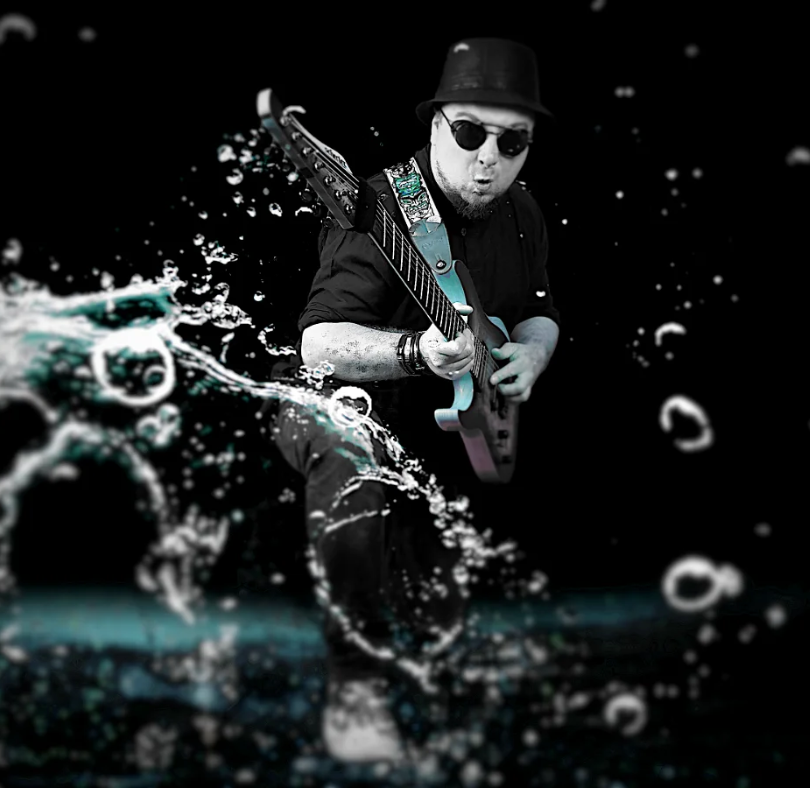
Amp Emulation vs The Real Thing

Albert S
Composer | Producer | Pianist | Guitarist
It’s been a quarter of a century since the world first encountered a modeling amp. Although a revolution at the time, valve amp manufacturers were not immediately worried for their livelihoods.
Now, with nearly 3 decades of R&D behind them, the likes of Kemper, Axe FX, and a multitude of stand alone units have the capability to fool even the most discerning ears.
There are some key elements to analyze when considering a move to emulation. We’ll tackle these from two points of view – playing live, and recording.
Accuracy of Emulation
LIVE
Unless you’re in a really tiny gig, your guitar will go through a P.A system. This introduces a multitude of tone shaping factors: Type of mic used, mic placement, mic bleed, desk EQ, frequency response of other speakers (P.A, stage monitors)…. all of these things will alter the original sound you hear coming from the amp and will easily blur the line between “is it a real, is it a sim?”
If, however, we were to take a direct line from an amp sim we immediately remove the first three attributes affecting Front Of House tone. This will result in a more crisp representation of the sound as originally intended.
Is it a really big stage? If you’re able to isolate a real amp everything becomes pretty much comparable. Maybe then it is time to bring in a good ol’ stack and move some air.
RECORDING
Budget is always the restraint here. If you need ten different amp sounds it makes sense to use emulation and re-purpose funds to enhance other areas of the record.
However, given the luxury of selecting the perfect environment for each instrument and choosing the perfect gear to capture everything with, why then put a replica in place of the real thing?

Scale of Sound: High dB tones at pub volumes?
LIVE
A massive advantage to emulation is you can tell the amp it’s on stage at Wembley, get it absolutely screaming, then attenuate the volume down to suit.
RECORDING
Again, if unable to make too much noise whilst tracking, this is a wonderful feature to have available. Can a simulation really recreate the behaviour of a fully cooking valve amp though?
One criticism I have encountered with sims is that they don’t feedback in the same way. There is a sense that the guitar and amp are no longer one system and the player feels cut off from an otherwise fiery sound. A physical volume attenuator between an amp and cab could serve a more organic purpose here.
Physicality & Reliability
LIVE
Unless you have a dedicated road crew, there is a clear winner. Not to mention the comparably fragile nature of tubes and the time it takes them to reach operating temperature.
RECORDING
One of the hardest things to relay via a record is the energy which will be felt hearing the song live. Having a big, warm, tube amp in the room when cutting your parts will inevitably feel more special and inject more energy into your performance.
Additionally, being able to organically move mics in front of a real cab is a far easier process than adjusting I.Rs in virtual space.

How do you feel? Does one make you play better?
This is the big one – no one will buy a ticket to listen to lifeless, sterile music.
You have to feel something, you have to be able to let go. If having a huge tube amp behind you gets you to that place then it is worth carrying up all the stair cases in the world.
I’ll share my perspective on this, hopefully you’ll quickly agree or disagree and that should tell you something about what you need in each situation:
LIVE
I made the switch to emulation a few years ago. I didn’t just go and buy a Kemper; I kept it all on the floor and went through numerous pedal sims in various combinations. Now I have sounds I absolutely love and can rely on being identical every night. This personally puts my mind at rest so I can just get on with playing and not have any nasty surprises to deal with.
Additionally I run a D.I. straight to front of house; giving the audience a much more faithful tone, not to mention crystal clear monitoring.
RECORDING
It depends what the record is calling for but a big loud amp which has been cooking for a few hours is always a nice starting point. The difference here is I can take the time to dial in tones to suit whatever it is I’m playing on and not be worried about overrunning at soundcheck and wind up having to use a half-baked tone all night.
About PIVODIO™ Coach Albert S.
Albert S. is a composer, producer, pianist, and guitar player based in St Albans, UK. He began playing the piano at the age of five and picked up the guitar when he was 11.
In addition to performing live, he is currently composing music for synchronization projects such as advert jingles and is preparing for his first film score in Autumn 2023. His client portfolio to date includes Once Upon a Time Agency, Altitude Film Studios, Monkey Shoulder Whisky, and BrambleTyne Games.
His skills encompass composition, writing, arranging, mixing and production, mastering preparation, improvisation on piano and guitar, advanced guitar techniques, and providing guitar tone ideas.